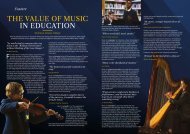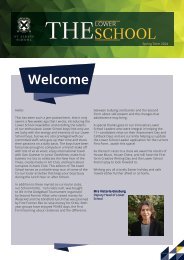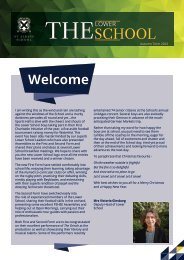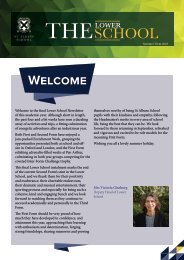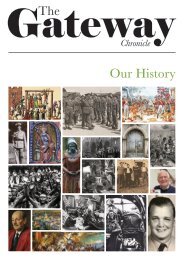You also want an ePaper? Increase the reach of your titles
YUMPU automatically turns print PDFs into web optimized ePapers that Google loves.
The <strong>Gateway</strong> <strong>Chronicle</strong><br />
Rugby in South Africa: How a<br />
World Cup was able to heal a<br />
broken nation<br />
Johannesburg 1995. Joel Stransky’s extra time drop<br />
goal stunned a nation and made South Africa rugby<br />
world champions for the first, but not last, time.<br />
This was their first world cup that marked a significant<br />
return to sport on the global stage, however,<br />
the cultural impact of this victory on racial tensions<br />
is one that should not be underestimated.<br />
Below: the iconic moment when Nelson Mandela presented<br />
Captain François Pienaar with the Webb Ellis Cup<br />
For over thirty years South Africa had been expelled<br />
from almost every major sports federation for<br />
the segregation laws in their country. On the national<br />
level, there was a huge schism between blacks<br />
and whites not only in sport but in every aspect<br />
of life. The apartheid system meant that different<br />
races lived in different parts of town, had separate<br />
swimming pools, schools and entrances to buildings.<br />
Sport was a microcosm for the whole nation as the<br />
national rugby team, the Springboks, became symbolic<br />
of white privilege. Despite their<br />
inclusion of token black players in the<br />
squad, the international team suffered<br />
a complete isolation from international<br />
rugby between 1985 and 1991. The<br />
consequences of this isolation meant the<br />
Springboks could not participate in the<br />
first two Rugby World cups in 1987 and<br />
1991. By 1995 it was a pivotal turning<br />
point in South Africa’s history. They<br />
needed a unifying force to help bring the<br />
country together under one anthem, one<br />
flag, one ‘rainbow nation’.<br />
This unifying force came in the form<br />
of the 1995 Rugby World Cup. When<br />
Nelson Mandela was freed from prison<br />
in 1990 and later became the first president<br />
in 1994, it was his sole aim to fix<br />
a broken country. He rejected the ideas<br />
of some ANC members, who believed a<br />
black president should exploit his powers<br />
to make the whites subservient, but instead<br />
looked for ways to make amends for<br />
South Africa’s past by encouraging equality.<br />
It was this attitude that was a driving<br />
force in the events of the Rugby World<br />
Cup. Mandela saw this as the perfect<br />
opportunity to reinvent South Africa and<br />
restore the nation’s faith in the national<br />
rugby team and, by extension, help to<br />
create a new, racially equal country.<br />
In addition to the racial tension surrounding<br />
the team, the Springboks were<br />
not performing to a high standard in the<br />
16





